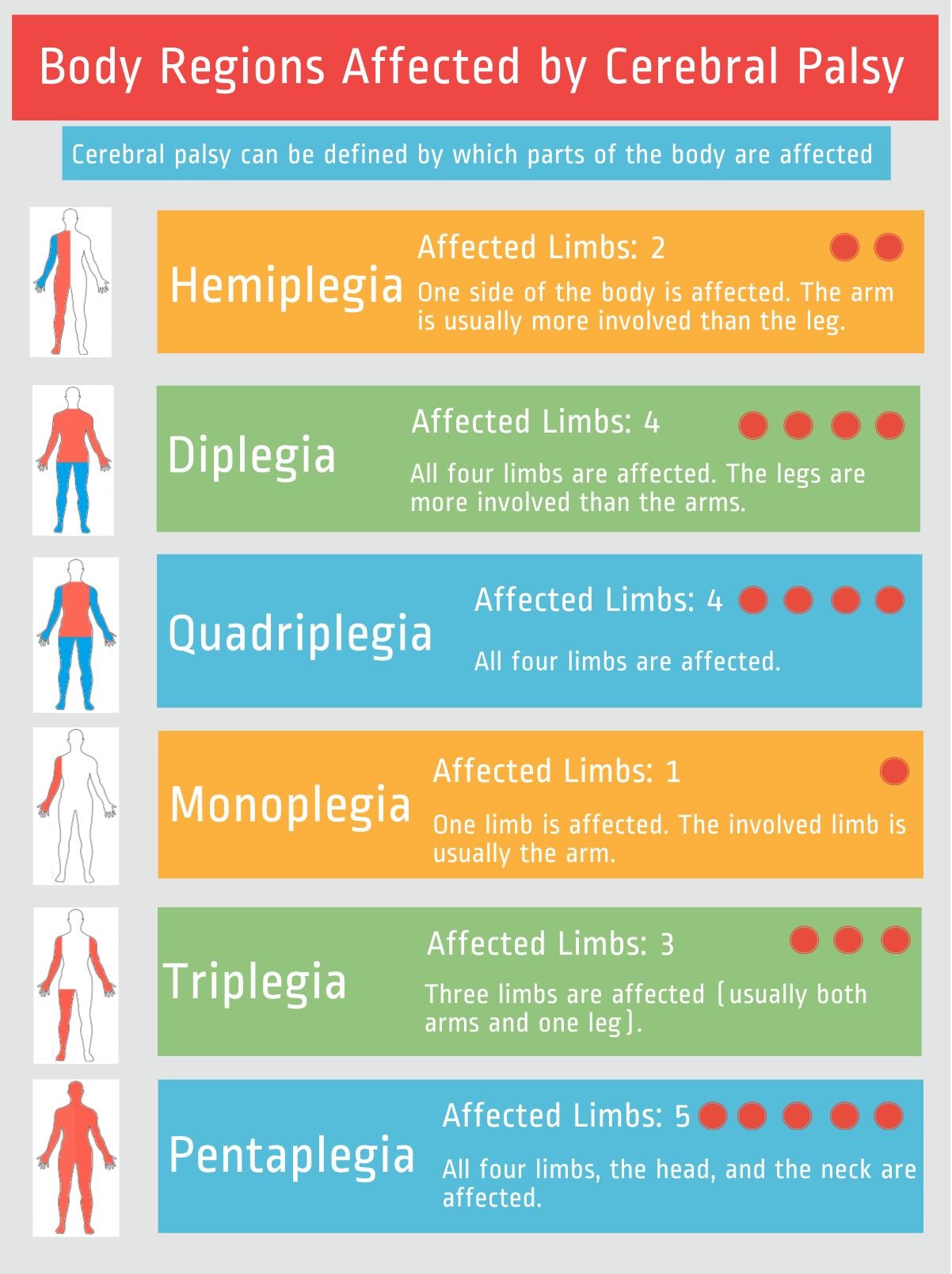Classifying Cerebral Palsy Based on Limb Involvement
In our last blog post “Classifying Cerebral Palsy: Motor Function,” we discussed how cerebral palsy diagnoses are classified into different types based on impairments to motor skill ability. Today we’re going to introduce readers to the second classification system most commonly used to group and define cases of cerebral palsy.
The limb involvement classification system explains which body parts are affected by cerebral palsy. Like the motor control classification system, the location and severity of a patient’s brain injury influences which limbs are impaired and to what degree limb function is limited. For instance, a patient diagnosed with spastic cerebral palsy in the motor function classification system can also be quadriplegic in the limb involvement classification—in this case, the patient would be diagnosed with spastic quadriplegic cerebral palsy.
Our birth injury lawyers encourage readers to learn the specific classification terms for a given cerebral palsy diagnosis in order to plot and fund the best possible treatment plan. To learn as much as possible about cerebral palsy classification, we urge you to refer to the following limb involvement classification visualization, our “About Cerebral Palsy” webpage, and our motor function classification blog post. If you suspect medical malpractice resulted in your loved one’s case of cerebral palsy and would like to schedule a free legal consultation, please reach out to our cerebral palsy attorneys here or toll-free at (888) 592-1857.

